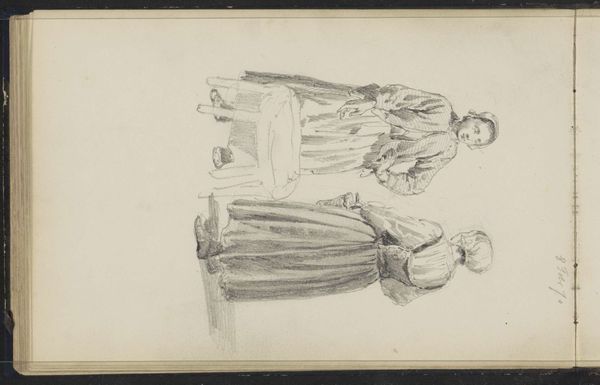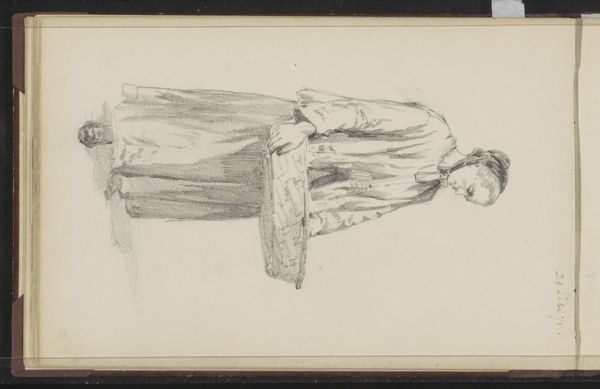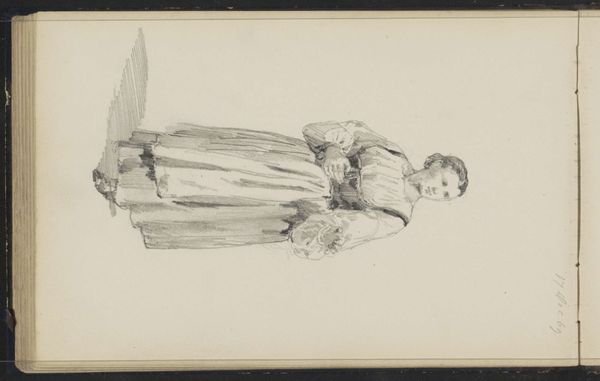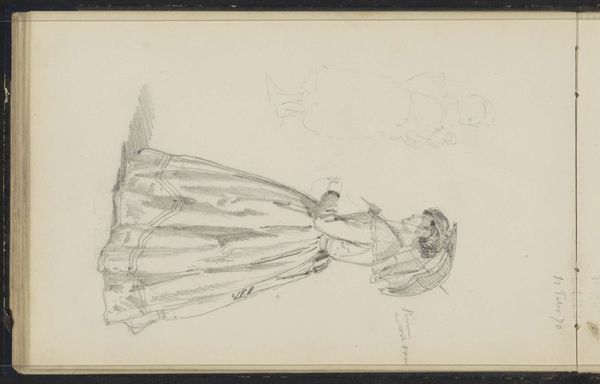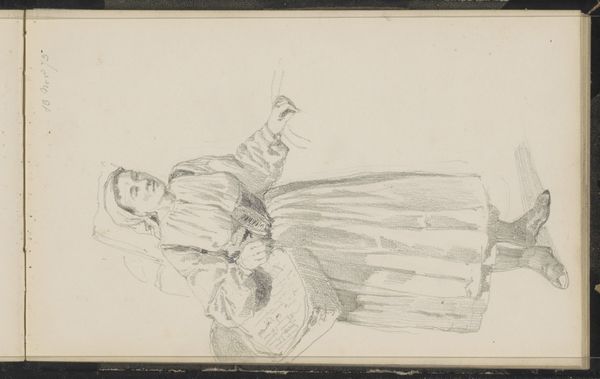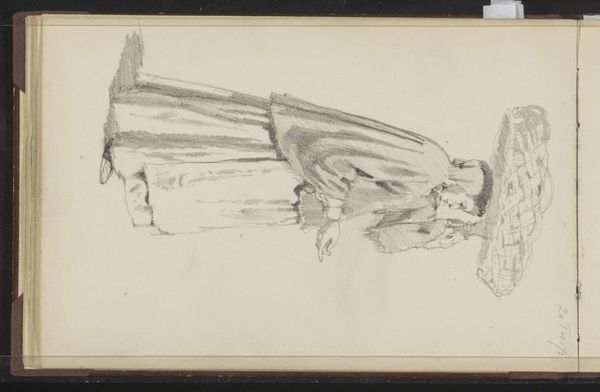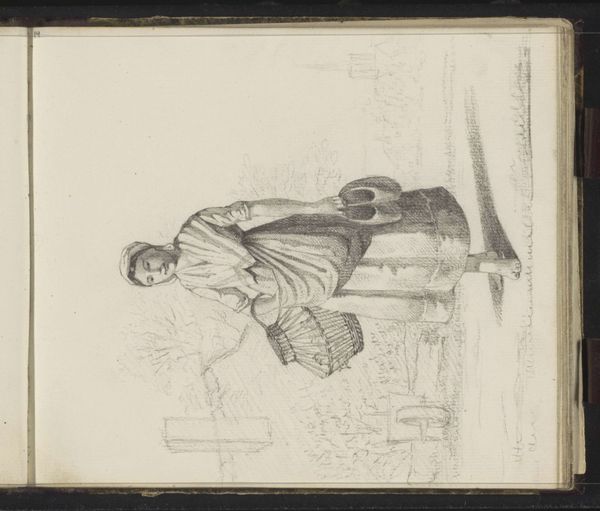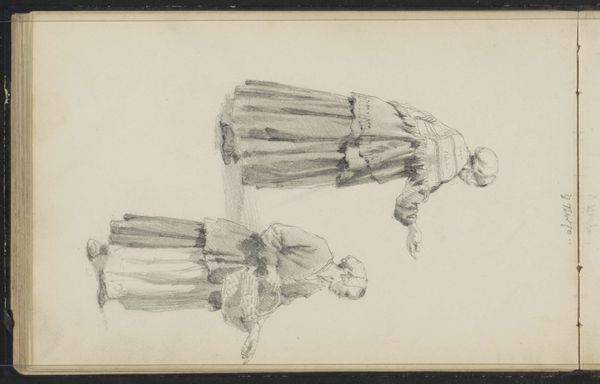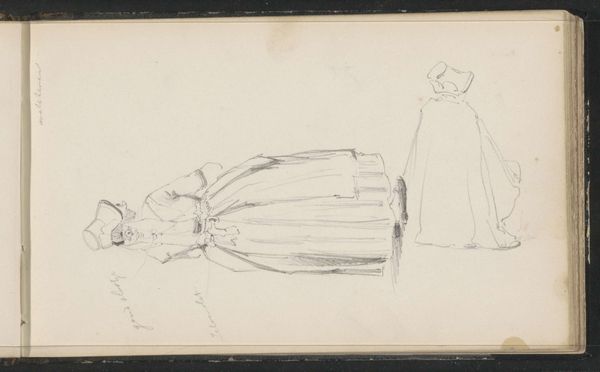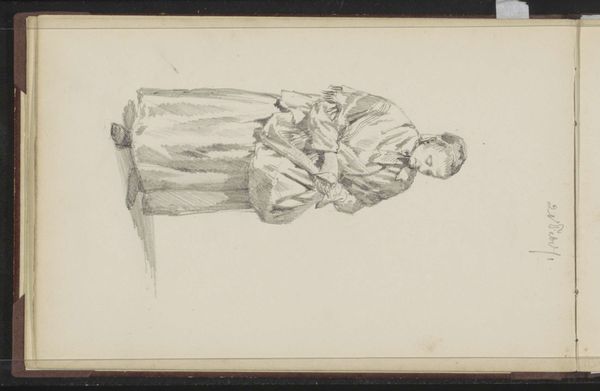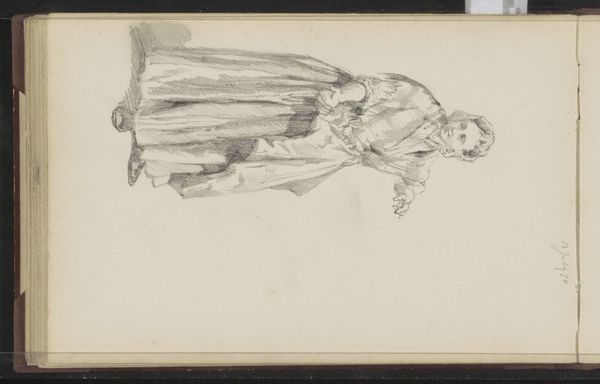
drawing, paper, pencil
#
portrait
#
drawing
#
light pencil work
#
quirky sketch
#
pen sketch
#
pencil sketch
#
paper
#
personal sketchbook
#
idea generation sketch
#
ink drawing experimentation
#
pen-ink sketch
#
pencil
#
sketchbook drawing
#
genre-painting
#
sketchbook art
#
realism
Copyright: Rijks Museum: Open Domain
Editor: This is "Twee vrouwen" or "Two Women," a pencil drawing by Cornelis Springer, likely from the 1870s, now held at the Rijksmuseum. It’s a quick sketch, and I’m immediately drawn to the almost ephemeral quality of the figures, like captured moments. What can you tell me about it? Curator: This piece speaks volumes about the position of women in 19th-century Dutch society and art's role in reflecting that reality. It prompts us to consider their representation – were they simply aesthetic objects, or did they possess agency? This is where we can bridge art history with feminist theory. Do you see hints of individuality in their portrayal, or are they generic representations of womanhood? Editor: That's a great point! I initially saw them as somewhat generic, but looking closer, there's a slight difference in their postures and the way their dresses are sketched. Perhaps Springer was hinting at individual identities, but constrained by the social expectations of the time. Curator: Precisely! And consider the 'genre-painting' tag. It suggests everyday life, but whose everyday life was being documented? Was it accessible for every social class or only to specific social circles? Also, remember this was "possibly" made between 1870-1878, during rising waves of feminist awareness and societal shifts, and how that would play into art’s response. It’s vital to explore how the gaze, both the artist's and ours, shapes the narrative. How does this sketchbook piece challenge or reinforce power dynamics? Editor: I hadn't considered the gaze in that way before. Thinking about the rise of feminist awareness at the time makes me rethink my first reaction of a "simple sketch", and see a nuanced social commentary about class and representation. Curator: Exactly! Art is never created in a vacuum. Editor: Thank you. I’ll never see sketches in the same light again. Curator: And I am reminded to consider not just art’s commentary on social inequalities but on their impact.
Comments
No comments
Be the first to comment and join the conversation on the ultimate creative platform.
